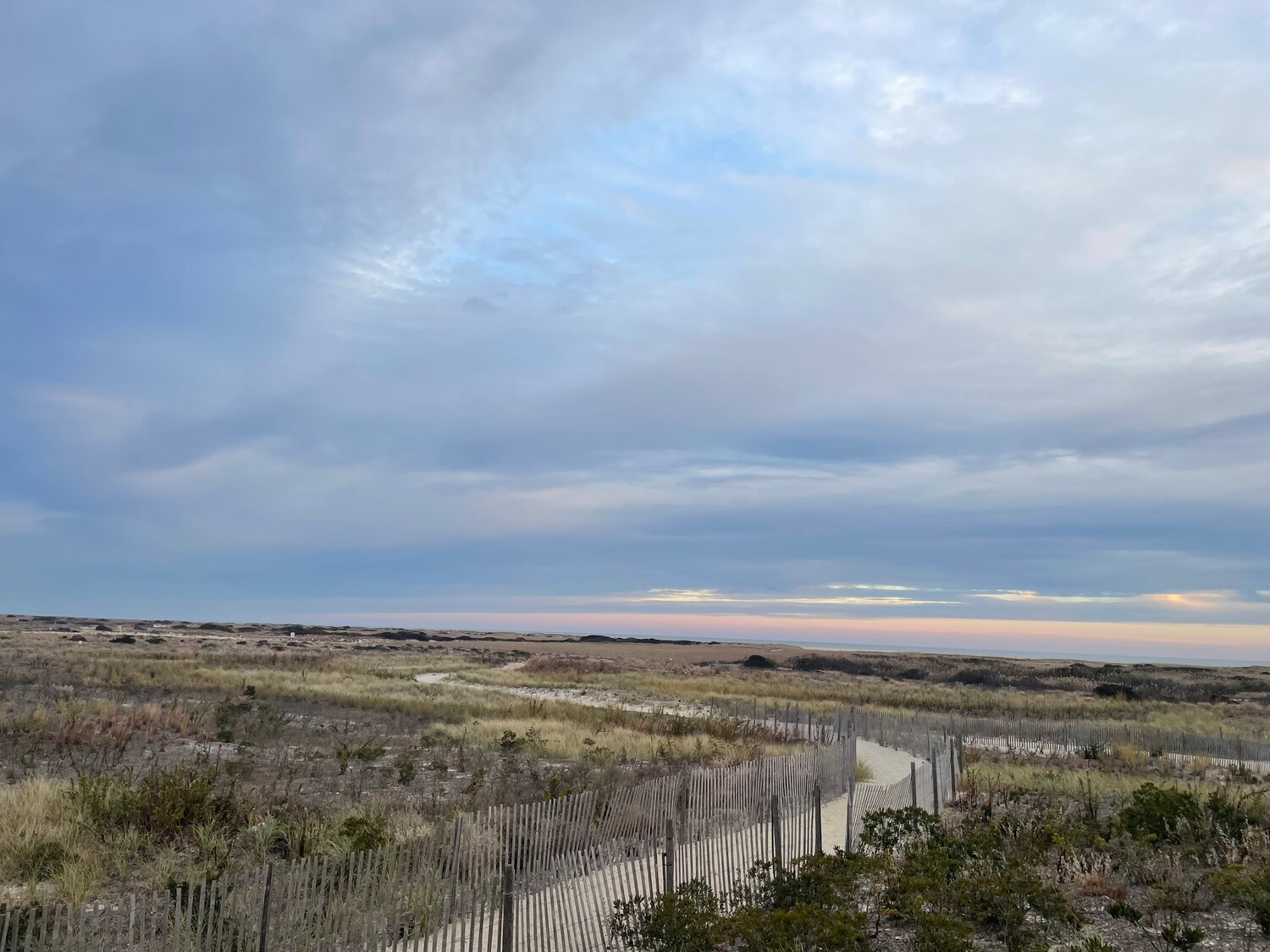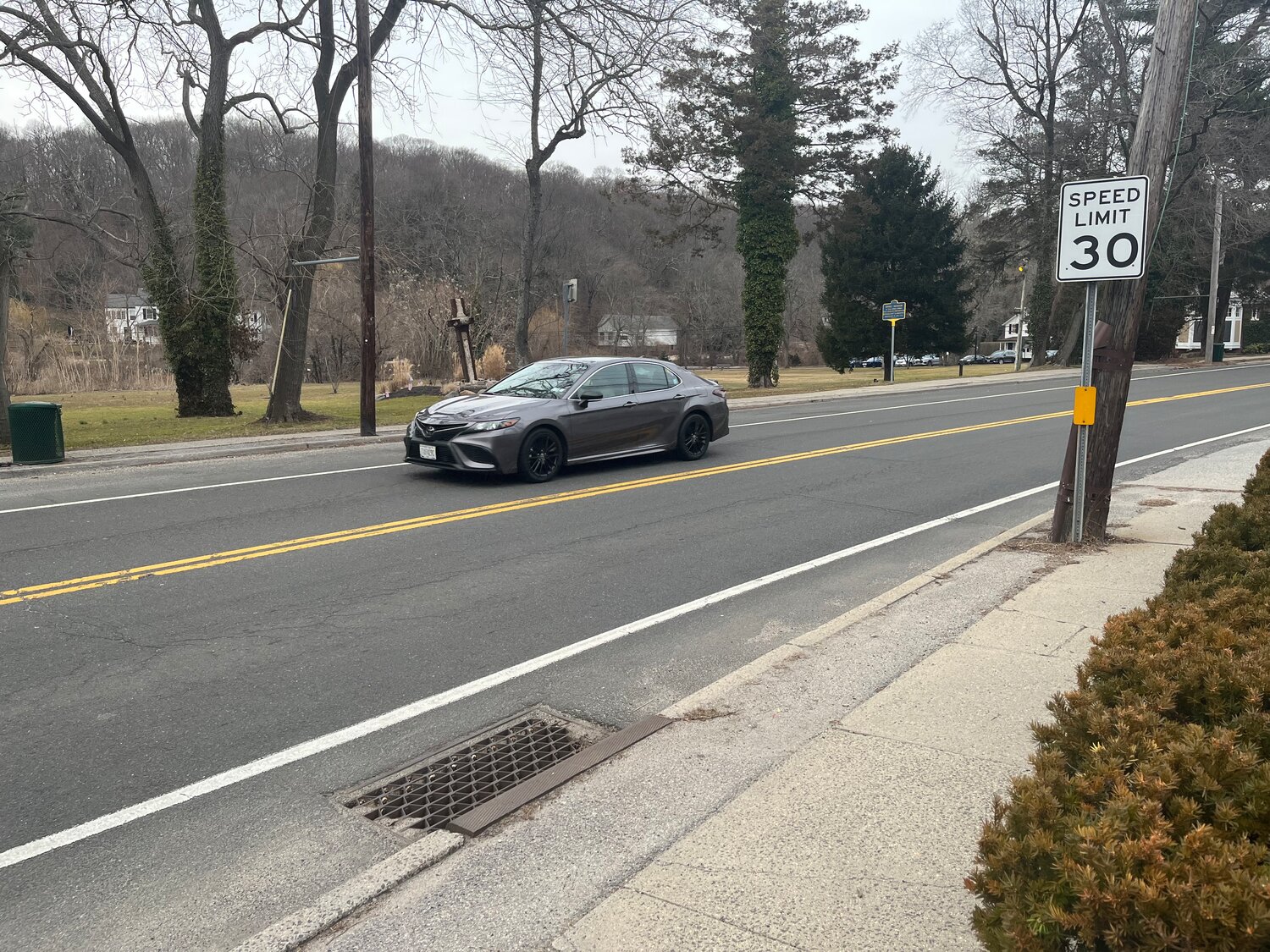The hidden danger of noise and light
These lesser-known pollutions come with risks
Long Island faces a growing crisis as noise and light pollution become more troublesome.
Noise pollution — characterized by unwanted and harmful sounds — and light pollution — stemming from excessive artificial lights — are pressing issues impacting not just all of us who live here, but also the environment.
The World Health Organization defines noise pollution as disruptive sounds harmful to human health, while DarkSky International — a nonprofit that fights to return the stars to our skies — warns that light pollution not only affects the natural night sky, but it also disrupts wildlife and interferes with astronomical observations.
The consistent noise from traffic, airplanes, construction and urban development disrupts daily lives and sleep patterns. Simultaneously, the widespread artificial light from streetlights, billboards, and other sources diminishes the natural darkness at night, impacting stargazing and unsettling nocturnal wildlife.
As Long Island tackles these escalating issues, local authorities are actively working to enforce noise regulations and promote responsible outdoor lighting practices, such as the Dark Skies Protection Act, put forth by the Assembly last year. The aim is to strike a balance between the imperatives of urban progress and the preservation of Long Island's unique environment.
Addressing noise and light pollution is vital for protecting human health, according to the WHO, as well as maintaining the integrity of natural ecosystems.
Additionally, research shows the detrimental effects of noise pollution — including more stress, hypertension, and even cognitive impairment in both adults and children. Similarly, excessive exposure to artificial light at night contributes to lower quality sleep and insomnia, and even mood disorders.
These environmental stressors also affects local wildlife populations by altering migration, nesting and foraging patterns, and even disrupting reproductive hormones and behaviors. Fireflies, for example, can no longer can find mates in an artificially lit night sky.
“Almost every form of wildlife uses the night for either navigation or mating, or for many ways of regenerating the species,” said Susan Serven, a DarkSky spokeswoman. “So if you don't have a deep dark night, you have this artificial daylight. It can confuse them, and it can affect their physiology as well.”
While it might not get the same attention as other forms of pollution — like air and water — community organizations are teaming up with environmental advocates and researchers to raise awareness and devise strategies against noise and light pollution on Long Island.
The Town of Oyster Bay, for example, mandates that any outdoor light is properly shielded to ensure light is only cast on necessary areas rather than, really, all over the place. They must also be placed on a timer to turn on and off at appropriate times to save energy.
The Village of Malverne passed a noise ordinance last December intended to limit the unnecessary sound neighbors say they experience at all hours of the day.
“Sleep is the biggest factor in all of this,” Malverne mayor Tim Sullivan said. “Residents are trying to find peace at night. And if that’s disturbed, it has a negative effect on your mental well-being and your physical functionality, which could negatively impact your earnings potential, your family, your home life, and how you generally interact with people on a daily basis.
“My biggest concern, as a father, is when I have a plane flying over my house in the middle of the day, that’s excessive. It has woken my daughter up from her nap, and that (nap is) important to her well-being and development.”
Battling light pollution
Once the heart of aviation attracting the likes of Charles Lindbergh and Wiley Post, Long Island is now a hot spot for the biggest threat to our sky: light pollution.
South Shore neighbors, for example, are all too familiar with the incessant, 24-hour glow to the west that is New York City. But light pollution atlases maintained by the National Oceanic and Atmospheric Administration and the Cooperative Institute for Research in Environmental Sciences reveal Nassau County is not without its own blame.
Light pollution is “the human-made alteration of outdoor light levels from those occurring naturally,” according to DarkSky. And for more than 20 years, Long Island has produced light pollution on par with one of the world’s biggest cities: it’s neighbor, New York.
“We’ve been losing our night sky for decades,” Serven said, adding that more than 90 percent of people throughout the country can no longer see the Milky Way — or even many stars, for that matter — from their backyards.
“We’re really the first generation who has lost the night sky.”
Some of our biggest contributors, according to DarkSky, are streetlights, electronic advertising, and even parking lots — and it’s getting worse. Light pollution has risen by nearly 10 percent every year, and is projected to double over the next decade, Serven said.
That over-lighting comes at a cost.
Every year, millions of sea turtles that call Long Island home are killed because they mistake endless streetlights and billboards for a glowing ocean horizon with a brightness that rivals the moon. The fireflies that marked summer nights on Long Island now face total extinction, and studies have shown light pollution is largely at fault.
Humans are not exempt from the effects of light pollution. Our circadian rhythm — or sleep-wake cycle — relies on light cues from our natural world. But in an environment full of blue light from cellphone and laptop screens, our natural clocks are ticking out of sync.
This circadian disruption, studies show, is linked to mood disorders, reproductive problems, cancers and more. It also has drastic effects on our ability to produce melatonin, meaning more people are lying awake at night, often not realizing that the brightness that surrounds them throughout the evening is to blame.
The cost of light pollution is literal, too. DarkSky estimates 30 percent of all outdoor lighting in the United States is misdirected — meaning shone on areas that don’t require light, often even up into the night sky itself — adding up to $3.3 billion wasted every year. The energy it takes to sustain those unnecessary lights creates 21 million tons of carbon dioxide every year, which is among the leading contributors to climate change.
And light isn’t the only invisible menace draining your health.
Taking on noise pollution
Noise pollution, is characterized by sounds that reach above the human decibel threshold, the level of sound it takes to cause auditory damage, and has far-reaching effects on our well-being.
Various sources contribute to noise pollution, with cities like Glen Cove and Long Beach bearing the brunt of its impact. Traffic noise — including the incessant honking of horns and the roar of engines — dominates streets, reaching levels as high as 100 decibels — equivalent to a hair dryer or a blender — according to the Hearing Center of Excellence, a program created by the U.S. Defense Department to study and reduce hearing loss among veterans.
Similarly, air traffic noise, construction sites, and bustling nightlife establishments all contribute to the cacophony of urban-like life.
“Sounds that reach 85 decibels or higher can harm a person’s ears,” according to National Geographic. “Sounds that exceed this threshold include familiar things, such as power lawn mowers (90 decibels), subway trains (90 to 115 decibels), and loud rock concerts (110 to 120 decibels).”
Lawnmowers and leaf blowers long have been a point of contention between business owners and local governments, such as in the Village of Sea Cliff, which has discussed numerous complaints by both residents and businesses regarding their use in the last two years.
Following nearly two years of research, village officials passed an ordinance in 2022 restricting the days leaf blowers can be used while promoting the use of electric leaf blowers as opposed to louder, diesel versions.
“We needed to balance the public’s right to live in a quiet, bucolic setting versus other residents who hire landscapers to do their work,” Sea Cliff mayor Elena Villafane said. “So, we restricted the gas leaf blowers by prohibition during the spring and summer, and then we’ve limited the hours of electric leaf blowers during the same period to weekdays, business hours. And then, in the fall and winter, you can use both.”
The effects of noise pollution extend beyond mere annoyance, according to the federal Environmental Protection Agency and similar organizations. Prolonged exposure to loud noises can lead to a range of health issues, including hearing loss, high blood pressure and heart disease.
Moreover, noise pollution disrupts sleep patterns, increases stress levels, and impairs cognitive function, particularly in children according to Matthew Mannis, a noise consultant for AKRF Inc.
“Whether it’s construction noise outside or aircraft flyovers — or even the most mundane things that we take for granted — these everyday noises can be disturbing,” Mannis said. “We are learning that higher degrees or levels of noise for extended periods of time can raise anxiety and blood pressure levels.”
For wildlife, noise pollution presents its own set of challenges. Marine mammals such as whales and dolphins — which have been spotted more often around the Long Island Sound as water temperatures have risen — rely on echolocation for communication and navigation, according to National Geographic.
However, the underwater cacophony created by ships, sonar devices and seismic surveys interferes with their ability to perceive their surroundings, leading to mass stranding and altered behavior.
Awareness and education are essential tools in combating noise and light pollution.
“Light pollution is actually the easiest form of pollution to fix,” Serven said. “Simply turn off any lights that aren't needed at night. That’s the simplest thing you can do.”
DarkSky also recommends neighbors swap unprotected outdoor lights for ones that are shielded or on timers to limit unnecessary light and energy drainage. Plus, more and more regions — including New York — are participating in “Lights Out,” a movement to shut off nonessential outdoor light between 11 p.m. and 6 a.m., during bird migration periods to help lessen light pollution’s effects on wildlife.
Investment in noise-reducing technologies — such as sound barriers and quieter asphalt for roads — can mitigate the impact of noise pollution in urban areas, according to the European Environment Agency, an organization in the European Union that studies data to support Europe’s environment and climate goals. Moreover, fostering a culture of environmental stewardship and responsible noise management is crucial for safeguarding our health and the well-being of wildlife.
“Learn as much as you can, and tell others,” Serven said. “Because it’s critically important. And, the issue is getting worse.”










